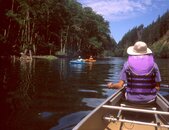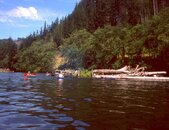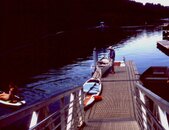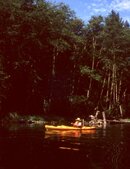Today I finally set up my III with my SB105 and Nikonos camera tray and arm that I used with my V. Everything seems to fit and work okay. The only adjustment I needed to make was to reposition the thumb screw that secures the camera to the tray. (But, there is a slot on the tray that seems to intended for this very purpose.)I think you are correct, in that the strobe contact was changed between the Nikonos II and III. I think they kept it the same for the Nikonos IV and V, as they had already made the needed changes in the Nikonos III. I may be wrong though, as the Nikonos IV and V had TTL (through the lens) flash ability, I believe (I have never used a Nikonos V). Check the cord contacts, and that may tell you.
SeaRat
I was planning to take the rig diving this weekend, but decided against because I didn't want to brave holiday traffic.
Soon ...
P.S.: Let's see: 36 exposures really yield only 12 pics (because of bracketing), correct? Only a couple of which will be usable, maybe, correct? When the film is eventually developed?
rx7diver







